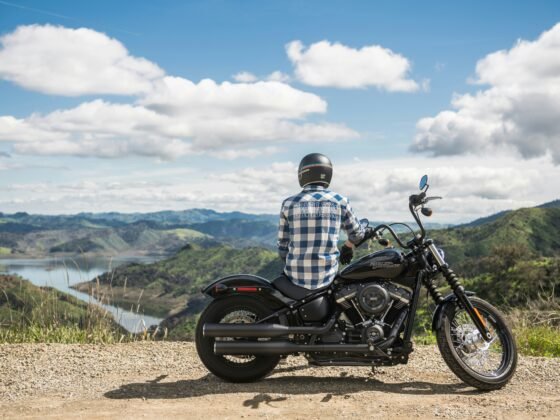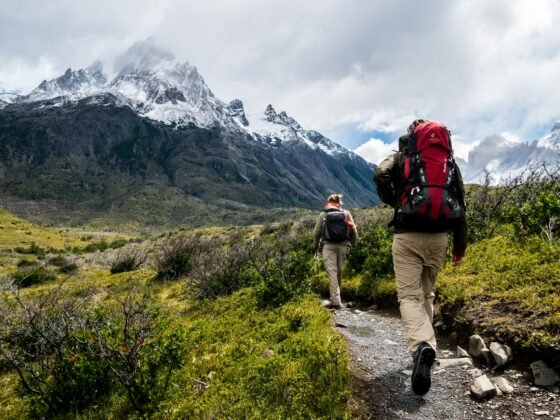Preparing for any trip can be overwhelming at times. But with a backpacking to-do list before you leave, everything can be organised one step at a time. Which means you can concentrate on the fun you’re going to have when the trip starts.
Planning Your Backpacking Route:
From a day trip to spending months going around the world, the planning for any backpacker adventure is essentially the same. It starts with planning your route.
The vital first step is to be honest about what you want to do. If you absolutely love hiking but hate camping, then you’re going to enjoy yourself more with a hostel or hotel at the end of each day. If you rarely go hiking, then plan to start with shorter excursions.
When you’re going abroad, it’s even more important to consider what type of experiences you enjoy. If you need a beer and somewhere comfy to relax after a hard day of walking, then you won’t necessarily enjoy long stretches under canvas in the wilderness. But those looking for a true escape might also want to avoid the more popular backpacker routes, and head further off the beaten track.
The other planning necessity is to consider your budget. Countries like India, Sri Lanka and Nepal offer a lower cost of living, with South East Asia also relatively budget friendly. If you have around £1000 per month, you’ll be reasonably comfy as a solo backpacker. But Africa and the Middle East will be close to double that cost on average – and if you’re travelling with a friend or partner, add 50% to your total costs.
If your budget is stretched, then now is the time to consider spending less money by couch-surfing or house sitting instead of paying for accommodation. It’s relatively popular to work in exchange for food and accommodation, or even to pick up a salary by picking fruit, bartending or teaching English as a foreign language. If you can line up a few of these opportunities while you’re still at home (and with reliable internet and telephones), then it puts less emphasis on good fortune and contacts at hostels when you’re travelling.
If you’re not sure about travelling solo, it’s also the time to consider either buddying up with a friend, or looking at the various options for backpacking groups.
Prepare Yourself For a Backpacking Trip:
Do you have any documents you need? If you’re planning on backpacking around the world, you’ll not only need a valid passport. Many countries will require you to have more than 6 months left before your passport expires, and you’ll also need enough blank pages for visa stamps and stickers.
You’ll also need to know the visa situation for every country you intend to visit, as some will allow you to stay for 30 days, others for six months. And there are varying costs, rules about working and other regulations which are better to know about before you go.
It’s also the time to check whether you need any permits for specific hiking trips, general regulations on exploring the wilderness, and making sure you have the right topographical maps. And start researching areas by connecting with local guides, park rangers and previous travellers to find out the best advice.
If you require vaccinations before travelling, you’ll want to get started nice and early. Plan on getting your first jabs at least two months before setting off, as many will need to be spaced out over a specific period of time. And some countries won’t allow you to enter without proof of specific vaccinations, such as Yellow Fever.
One of the more fun bits about preparing for your trip is the excuse to get out and start hiking. You’ll want to build up gradually, and make sure you’re wearing your backpack for practice. Start with shorter, one-day trips, and build up to multi-day excursions.
Back packing and hiking will put strain on different parts of your body to more casual walking, so it’s important to allow plenty of time to acclimatise to carrying your essentials with you. And it will also be an important reminder to avoid unnecessary weight when you’re packing.
There are walking groups based everywhere. And even in an urban environment, you can spend time practising with some urban hiking. It also means you’ll get to know your kit, discover any problems, and avoid turning up on holiday with everything pristine and brand new.
The final stage of preparing yourself for your trip is making sure you have a basic understanding of any skills you’ll need. Take a basic first aid course, and learn how to construct a basic shelter, collect water and start a fire. Even if you don’t plan on spending nights in the wilderness, it’s always worth knowing what to do if you do get stuck somewhere.
What to Take on Your Backpacking Trip
The trick for successful backpacking is to have exactly what you need – no more and no less. But that can be tricky to judge on your first trip, which is why practice trips are so handy. After 10 miles of hiking, a lot of your equipment won’t seem as necessary.
The first check list is to ensure you have all the right paperwork. That includes passports, driver’s licenses, lodging and other reservations, permits, and vaccination certificates and travel insurance information. Make copies of everything, and also save scans in your email account or an online storage service.
You’re going to need a backpack. For shorter trips, you may want a pack of around 50 litres, but for longer excursions and travelling the world, you’ll want 70 litres or more. Backpack sizing is done by the length of your torso (from the top of your hips to the bony C7 vertebrae at the base of your neck), rather than height. You’ll be carrying most load on your hips by putting heavier items closer to your back and shoulders. So make sure you practice effective packing.
Clothing is important. Try to pick colours which match with everything (brown, grey, black, beige), and aim for multipurpose where possible. You’ll need trousers/shorts, some long underwear, a t-shirt, and a fleece-hoodie mid-layer. It’s better to wear socks for a couple of days in a row to cut down your clothing, and be prepared to do regular laundry.
You’ll also need to cope with every type of weather. So a waterproof jacket and pants should be packed along with sunglasses and sunscreen. A lightweight puffy jacket is a good idea for cold climates, along with a hat and gloves.
If you’re planning on being self-sufficient, you’ll also need a sleeping bag, three-season tent and a foam pad to rest on. For cooking, a backpacking stove and pot set are required. And the humble spork finally proves a replacement for a full set of cutlery. You might want specific cooking utensils, a bowl and cup. But you’ll definitely want a sponge, soap and a water filter.
That’s food, shelter and clothing taken care of. What are the other backpacking essentials you’ll need for your trip?
You should pack a compass, and know how to use it. If you choose one with a sighting mirror, it can also be used to signal rescuers in an emergency. Trips into the extreme wilderness might also require a satellite phone or text messenger, plus a solar charger.
Both a first aid kit, and a repair kit, should be part of your packing. For repairs, even a few strips of duct tape can be invaluable. Save space by wrapping them around other items. You’ll also need a reliable lighter or matches, and a torch or headlamp to get anything done after dark.
A knife or multi-tool is essential so make sure you have one prepared, if you don’t have one we recommend that you look through some multi tool reviews to find the perfect one for you Just make sure it’s safely in your luggage when flying. When you’re considering toiletries, aloe vera can ease sunburn, condition hair, moisurise and work as shaving gel. Wet wipes are also incredibly useful for adding hygiene to any situation, and you will probably need insect repellent at some point in your trip.
If you have space left, then a portable doorstop or doorstop alarm will add security in hostels and other shared accommodation. You may also want to take a plug adaptor or voltage converter with you to keep gadgets powered. And taking a few padlocks can be incredibly useful. It’s worth checking that they’re approved by organisations like the TSA, so they won’t need to be cut off during any screening if you’re travelling through America.
And finally, you’ll want to record parts of your trip. While we all have smartphones, some of the cameras designed to take hard knocks can be incredibly useful. As can a simple journal.
It may seem like quite a long backpacking to-do list, but don’t forget your preparations will be spread out over a number of weeks and months. Take time to develop your plans (and let people know what they are should you need to be located). And you can also use the time to test the various hiking food available, practise your trail cookery skills, and decide what ingredients should be put into zip-top bags to take with you in your pack. The top of a mountain is no place to realise you hate jerky or trail mix. Especially when you could be enjoying a delightful meal with a little practice and preparation.











